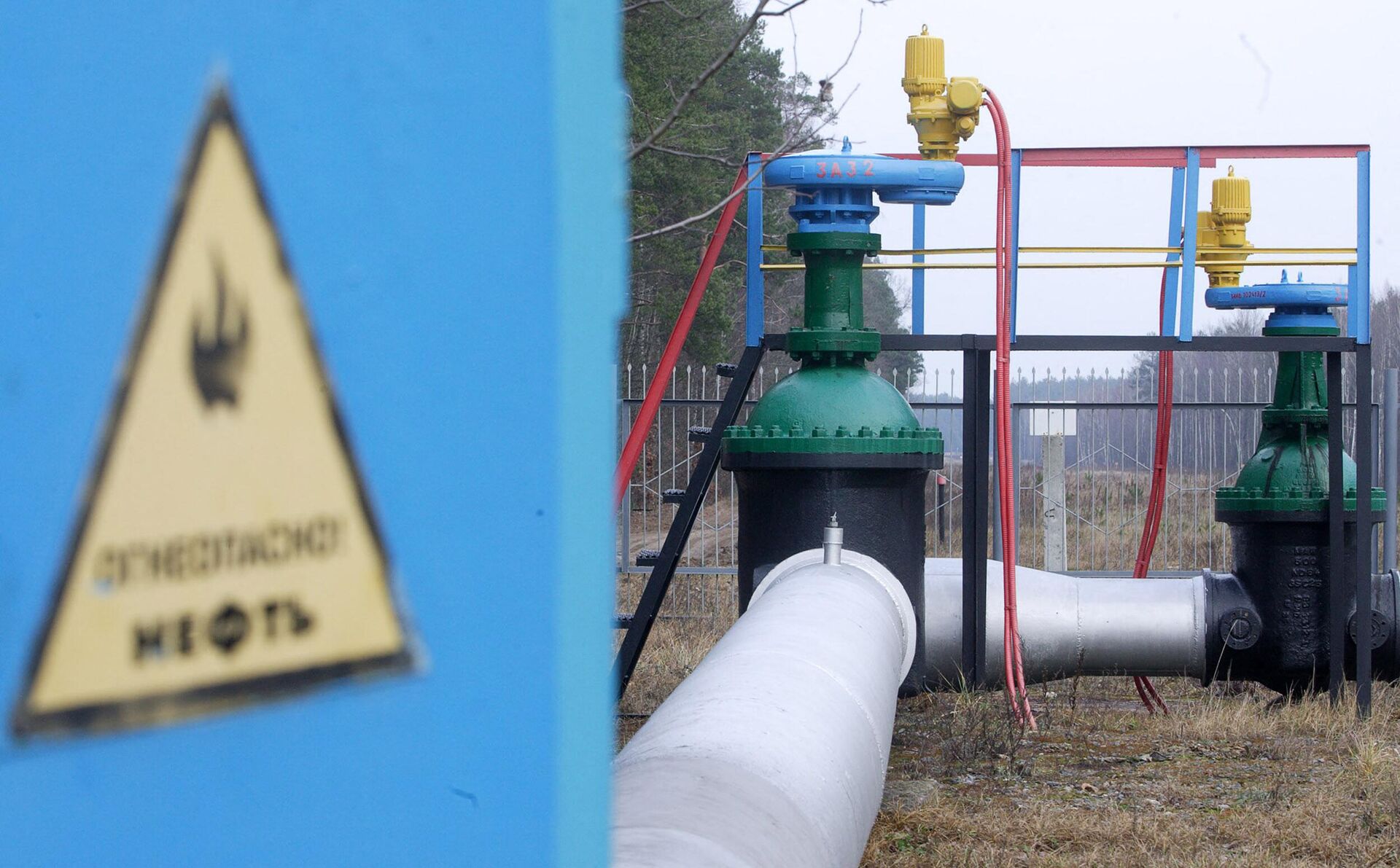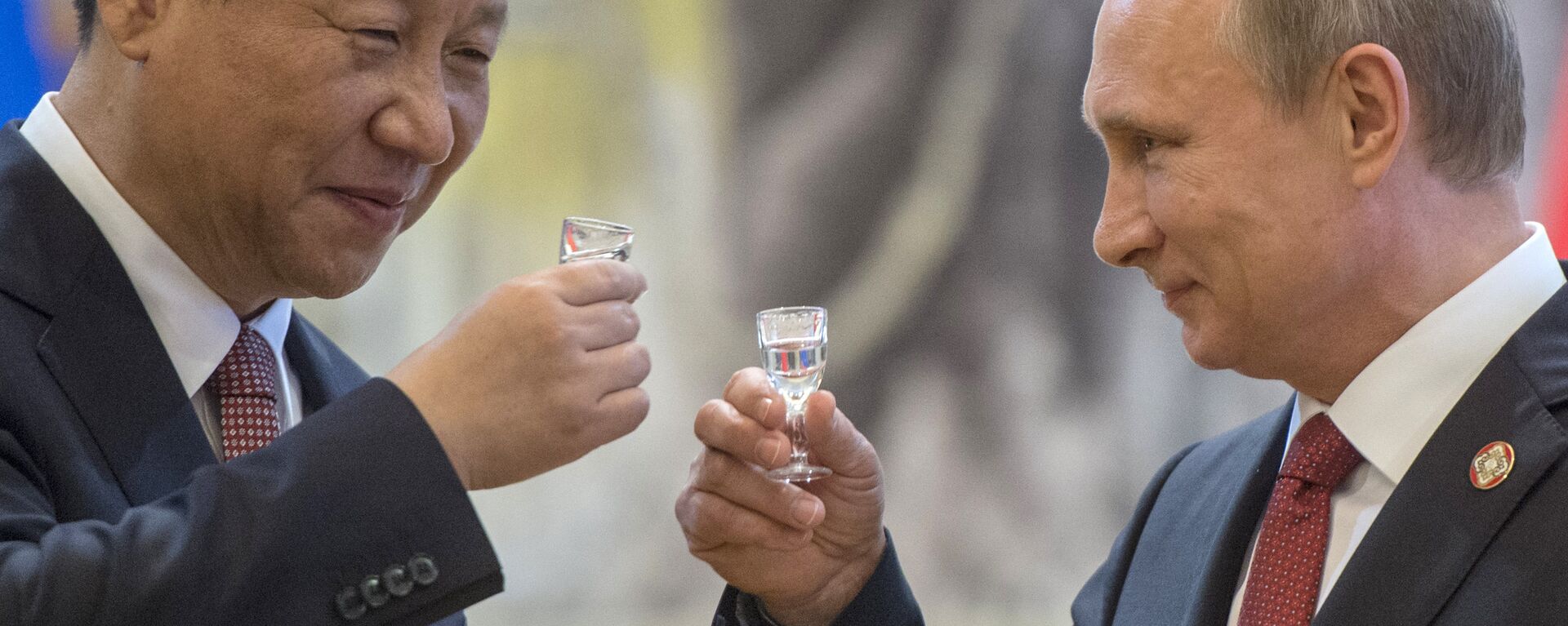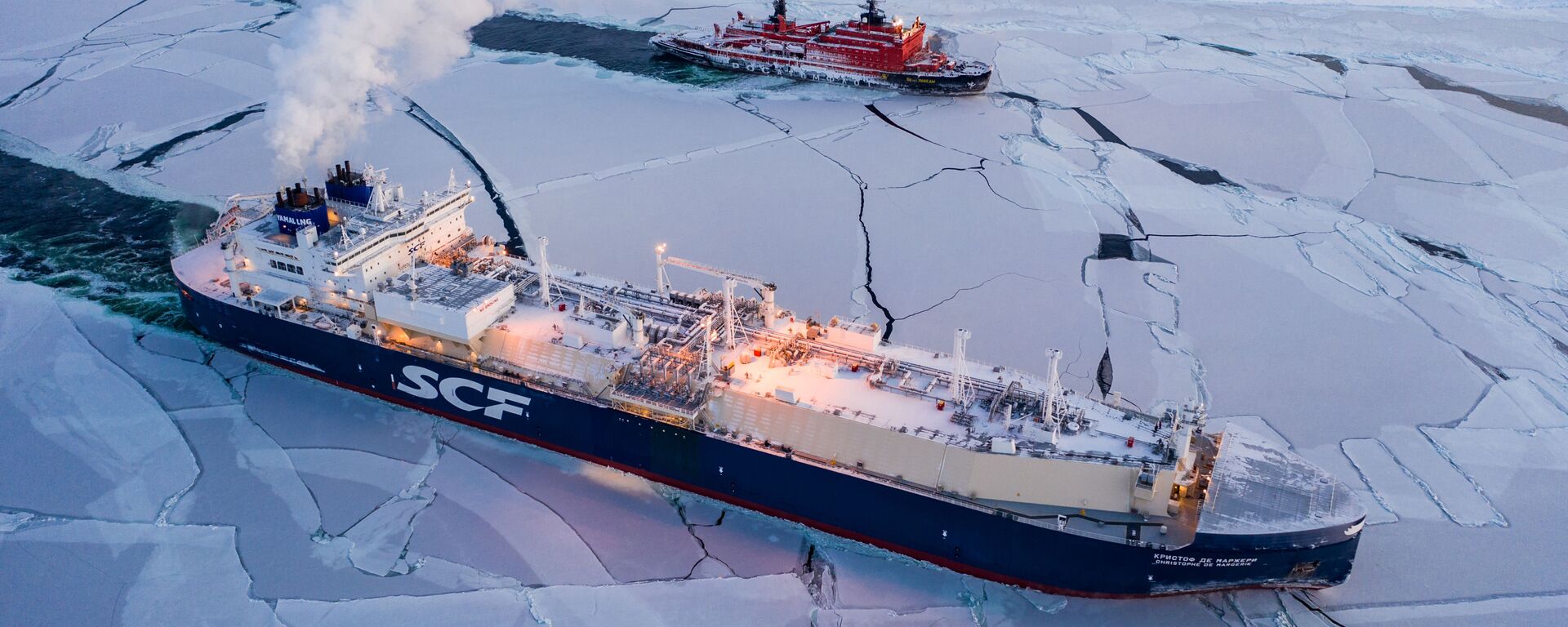https://sputnikglobe.com/20221209/new-master-of-seas-g7-price-cap-vs-russian-oil-fleet-insurance-companies--northern-sea-route-1105271559.html
New Master of Seas: G7 Price Cap Vs. Russian Oil Fleet, Insurance Companies & Northern Sea Route
New Master of Seas: G7 Price Cap Vs. Russian Oil Fleet, Insurance Companies & Northern Sea Route
Sputnik International
The G7 club, the EU and Australia apparently underestimated Russia's capabilities to resist the oil price-capping scheme: Moscow has a fleet, insurance... 09.12.2022, Sputnik International
2022-12-09T12:30+0000
2022-12-09T12:30+0000
2022-12-14T11:36+0000
sputnik explains
us
europe
russia
g7
oil
pipeline
sea
northern sea route
sanctions
https://cdn1.img.sputnikglobe.com/img/104104/02/1041040276_0:0:3073:1728_1920x0_80_0_0_f85409b3184a4591ef1c28ae919aa315.jpg
Major western countries have either banned Russian crude and petroleum products or are about to do so over Moscow's special operation in Ukraine. However, Russia still has plentiful consumers among developing countries where it has re-oriented oil flows.China and India have emerged as the biggest buyers of Moscow's hydrocarbons, absorbing two-thirds of over two million barrels per day (mb/d) of Russia's seaborne crude, abandoned by the West because of sanctions.In order to slash Moscow's earnings and make Russia's economy scream, the G7 came up with the price-capping scheme. The grand design prohibits EU and UK companies from transporting or insuring ships carrying crude oil from Russia to anywhere in the world – unless the buyer pays the price below the proposed price cap. Starting from February, Russia's petroleum products will also be subjected to the price cap rule, as per the measure's designers.Additional conditions secured by industrialized nations include a mechanism to reconsider the price cap limits every two months. Any resetting of the cap should leave it at least 5% below average market rates.The addressees of the grand design are developing economies in the first place: as US Treasury Secretary Janet Yellen elaborated earlier, neither the G7, nor the EU or Australia are going to benefit from suppressed prices on Russia's oil and petroleum, as they won't buy them any longer.There is yet another aspect concerning the G7 initiative: the EU has banned seaborne shipments of oil to the Old Continent and is set to prohibit deliveries of petroleum products in February 2023. The US feared that oil prices could have gone through the roof – thus accelerating inflation – had western transportation companies and insurers completely stopped providing services to Russia.Therefore, to shield the developed countries' club from further inflation, Washington proposed leaving Moscow the opportunity to sell its oil and even allowed it to make some profits. Russia remains the third-largest producer of crude and the second-largest exporter of the commodity. And when it comes to all oil products, Russia is the first exporter.However, Russia made it clear that anyone joining the measure formally or using it as leverage would be crossed out from the country's consumer list: the precedent set by the G7 is shattering the pillars of the free market economy and creating a cartel of consumers to manipulate prices contrary to market rules.What's Behind the G7's Measure?Why is the collective West so sure that the measure will work? The crux of the matter is that western companies are presently calling the shots on both the transportation and insurance markets. The 13-member powerful International Group of P&I Clubs (IGP&I) provide insurance services for 90% of global seaborne cargo.After the collapse of the USSR, Russia started largely relying on European companies to carry and ensure its seaborne shipments of oil and petroleum products. Prior to that, Soviet tankers, insured by Soviet state-run companies crisscrossed the world's oceans and delivered all sorts of commodities, including military equipment, to its allies in Latin America, Asia, the Middle East and Africa. In the early 1960s, Soviet tankers were instrumentalized to deliver Soviet weapons and ballistic missiles to Cuba during the Caribbean crisis. The USSR's state-of-the-art secret operation, known under codename Anadyr, was successfully accomplished in 1962.The designer of the price-capping plan believed that Russia would be unable to quickly beef up its tankers fleet and boost insurance services.In addition, NATO member states and the military bloc partners have long been keeping an eye on major sea lanes and hydrocarbon deliveries. Due to NATO's expansion, western geopolitical players could hypothetically create troubles for Russian cargo ships heading to the East from the Baltic and the Black Seas and further, through the Suez Canal and in the South China Sea.Previously, it was China that noticed that the traditional sea routes running from Europe and the Middle East to Asia are particularly vulnerable for potential sabotage and blockade from the collective West. Apparently, therefore, Chinese President Xi Jinping kicked off his famous Belt and Road Initiative (BRI), according to US intelligence agency Stratfor, also known as the "shadow CIA." In 2015 Stratfor released a report alleging that Beijing's BRI was not a bunch of lucrative infrastructural projects but a well-thought-out strategy of diversifying China's transport corridors. The US analysts admitted at the time that US military strategists are watching the established sea lanes closely and are ready to take action.Russia Diversifying Transportation and InsuranceIt appears that Moscow has assessed all the potential scenarios after the West stepped up its bellicose rhetoric, deliveries of arms and sanctions policy in the beginning of the year.Russia is reported to have bolstered its tanker fleet to deliver oil. In May, Russia's Rosneft PJSC and Gazprom Neft PJSC started increasing the bookings of tankers owned by Sovcomflot PJSC, Russia's largest shipping company specializing in the maritime transportation of hydrocarbons.Western mainstream press reported in December that Moscow had acquired an additional 100 vessels, while some media suggested that Russia's oil tanker fleet already amounted to 250 ships. According to Russian energy experts, the country's vessels could carry 70-80% of its total seaborne crude cargo. The Russian media hinted that the size of the Russian tanker fleet will be further expanded.Similarly, Russia instrumentalized its own insurance companies, including the Russian National Reinsurance Company (RNRC) and IPJSC Ingosstrakh, the country’s fourth-largest general insurer. Interestingly, Western media rushed to smear Russia's insurance firms in mid-November, apparently feeling that the latter could bite a share of the market the West has long deemed to be in its full control.As usual, the western press manipulated terms: it called the Russian oil fleet "dark" and claimed that it is operating "outside of global regulatory frameworks." However, in reality, Russia is simply maintaining its own independent fleet outside of the EU/UK regulatory framework, which Moscow now considers unreliable and abusing of free market rules.Russia's Eurasian Oil PipelinesFurthermore, one should also bear in mind that the G7 measures do not affect Russia's pipeline crude. The Czech Republic, Slovakia and Hungary, who were excluded from the scheme, are receiving oil through the Druzhba pipeline. Japan hopes that it will continue to get Russian crude via Sakhalin-2, the two 800-kilometer pipelines which bring oil and gas from the fields in the north of the Sakhalin Island.Russia also operates the 4,857-km ESPO oil pipeline that starts from Taishet in eastern Siberia and sends oil to the Pacific Ocean terminal at Kozmino. The ESPO pipeline also has a 942-km mainland China branch which goes further into the Northeastern oil pipeline network. In 2018, China strengthened the branch by building an additional line. Thus, according to S&P Global, in 2021, Asian refineries imported 2.4 million barrels per day (mb/d) or about 120 million metric tons per year (MMt/y) of Russian oil via the ESPO oil pipeline and waterborne routes, with over 80% of the oil delivered to mainland China.Russia's Northern Sea RouteNeedless to say, Russia is capitalizing on its favorable geographical situation which allows it to deliver its hydrocarbons to Asia through safe land routes. In addition, Russia has its own prospective maritime route which further lessens its dependence on the traditional sea lanes.On December 21, 2019, the Russian government approved the country’s development plan for its Northern Sea Route (NSR), a shipping lane located along Russia's Arctic coast within its exclusive economic zone (EEZ). The route through the Arctic offers a cheaper and faster transportation corridor between Asia and Europe, completely outside US control.The June 2021 blockage of the Suez Canal further underlined the importance of developing the NSR as an alternative. The West's sweeping anti-Russian sanctions and anti-free market price capping has added to the project's significance. In September 2022, the journal of the Eastern Economic Forum wrote that Moscow plans to boost its Arctic fleet by building 153 new ships, including 12 icebreakers.Moreover, the publication suggested that Russia aims to up transarctic transportation by creating a new class of cargo vessels for the NSR by 2035. According to the new naval doctrine, announced in August, Russia intends to use the NSR as a "safe, competitive, year-round national transport route."Russian media reported in November 2022 that icebreaking tanker "Vasily Dinkov" had passed the NSR for the second time in the history of Russia to deliver crude oil to China. On November 18, it arrived at the Chinese port of Rizhao, leaving Murmansk on October 27. According to the media, the passage along the NSR from Murmansk to Chinese ports takes an average of 18-20 days. For comparison's sake, it takes 40-42 days to bring the same cargo through the Suez Canal.While the designers of the oil price capping initiative apparently consider themselves the smartest in the room, their sanctions policy led to Russia strengthening its maritime capabilities and self-sustainability, at the same time prompting the development of new competitive industries and innovative projects. Is this what the G7 wanted?
https://sputnikglobe.com/20221123/five-reasons-why-g7s-price-cap-on-russias-oil-is-doomed-1104604524.html
https://sputnikglobe.com/20221205/why-g7-price-capping-wont-harm-russia-but-will-accelerate-inflation--recession-in-the-west-1105075488.html
https://sputnikglobe.com/20221206/how-g7-price-cap-started-disrupting-global-oil-flows-while-failing-to-slash-russias-earnings-1105113734.html
https://sputnikglobe.com/20221208/oil-price-cap-europeans-set-to-feel-more-pain-at-the-pump-soon-experts-say-1105238181.html
https://sputnikglobe.com/20190427/putin-northern-sea-route-belt-road-1074510132.html
https://sputnikglobe.com/20210610/suez-canal-blockage-underlines-importance-of-developing-northern-sea-route-aec-president-says--1083116255.html
russia
china
Sputnik International
feedback@sputniknews.com
+74956456601
MIA „Rossiya Segodnya“
2022
News
en_EN
Sputnik International
feedback@sputniknews.com
+74956456601
MIA „Rossiya Segodnya“
Sputnik International
feedback@sputniknews.com
+74956456601
MIA „Rossiya Segodnya“
g7, price cap on russian oil, anti-russia sanctions, energy embargo, russian oil pipelines, seaborne cargo, insurance, norther sea route, nato, china, india
g7, price cap on russian oil, anti-russia sanctions, energy embargo, russian oil pipelines, seaborne cargo, insurance, norther sea route, nato, china, india
New Master of Seas: G7 Price Cap Vs. Russian Oil Fleet, Insurance Companies & Northern Sea Route
12:30 GMT 09.12.2022 (Updated: 11:36 GMT 14.12.2022) The G7 club, the EU and Australia apparently underestimated Russia's capabilities to resist the oil price-capping scheme: Moscow has a fleet, insurance companies, and safe routes to transport its crude outside the West's control.
Major western countries have either banned Russian crude and petroleum products or are about to do so over Moscow's special operation in Ukraine. However, Russia still has plentiful consumers among developing countries where it has re-oriented oil flows.
China and India have emerged as the biggest buyers of Moscow's hydrocarbons, absorbing two-thirds of over two million barrels per day (mb/d) of Russia's seaborne crude, abandoned by the West because of sanctions.
In order to slash Moscow's earnings and make Russia's economy scream, the G7 came up with the price-capping scheme. The grand design prohibits EU and UK companies from transporting or insuring ships carrying crude oil from Russia to anywhere in the world – unless the buyer pays the price below the proposed price cap. Starting from February, Russia's petroleum products will also be subjected to the price cap rule, as per the measure's designers.
Additional conditions secured by industrialized nations include a mechanism to reconsider the price cap limits every two months. Any resetting of the cap should leave it at least 5% below average market rates.
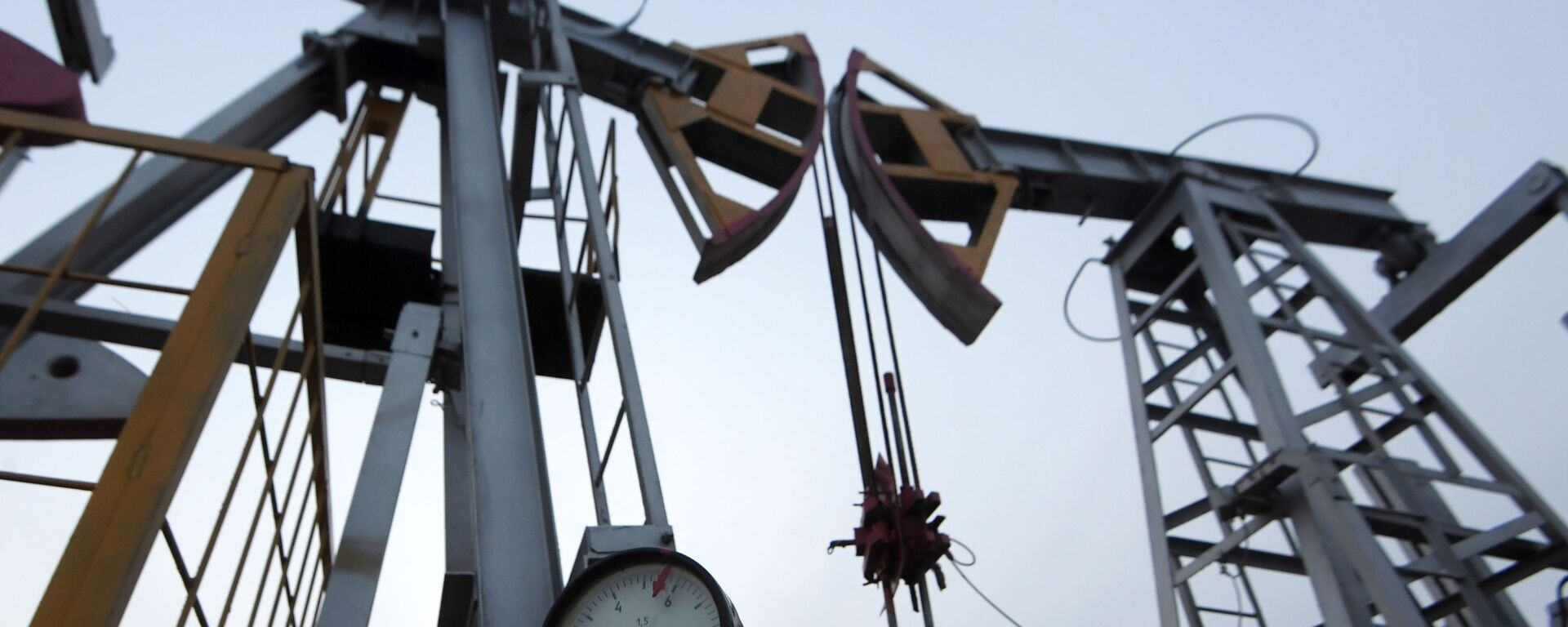
23 November 2022, 13:33 GMT
The addressees of the grand design are developing economies in the first place: as US Treasury Secretary Janet Yellen elaborated earlier, neither the G7, nor the EU or Australia are going to benefit from suppressed prices on Russia's oil and petroleum, as they won't buy them any longer.
There is yet another aspect concerning the G7 initiative: the EU has banned seaborne shipments of oil to the Old Continent and is set to prohibit deliveries of petroleum products in February 2023. The US feared that oil prices could have gone through the roof – thus accelerating inflation – had western transportation companies and insurers completely stopped providing services to Russia.
Therefore, to shield the developed countries' club from further inflation, Washington proposed leaving Moscow the opportunity to sell its oil and even allowed it to make some profits. Russia remains the third-largest producer of crude and the second-largest exporter of the commodity. And when it comes to all oil products, Russia is the first exporter.
However, Russia made it clear that anyone joining the measure formally or using it as leverage would be crossed out from the country's consumer list: the precedent set by the G7 is shattering the pillars of the free market economy and creating a cartel of consumers to manipulate prices contrary to market rules.
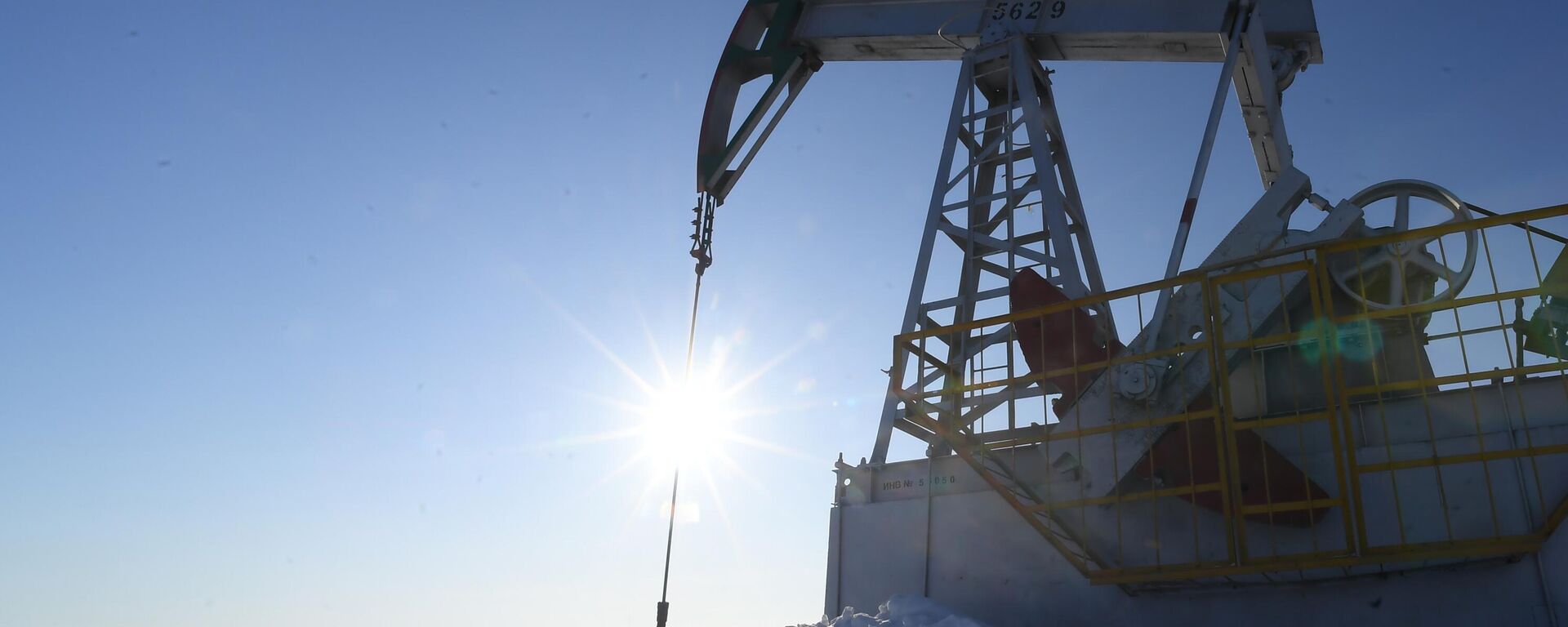
5 December 2022, 18:16 GMT
What's Behind the G7's Measure?
Why is the collective West so sure that the measure will work? The crux of the matter is that western companies are presently calling the shots on both the transportation and insurance markets. The 13-member powerful International Group of P&I Clubs (IGP&I) provide insurance services for 90% of global seaborne cargo.
After the collapse of the USSR, Russia started largely relying on European companies to carry and ensure its seaborne shipments of oil and petroleum products. Prior to that, Soviet tankers, insured by Soviet state-run companies crisscrossed the world's oceans and delivered all sorts of commodities, including military equipment, to its allies in Latin America, Asia, the Middle East and Africa. In the early 1960s, Soviet tankers were instrumentalized to deliver Soviet weapons and ballistic missiles to Cuba during the Caribbean crisis. The USSR's state-of-the-art secret operation,
known under codename Anadyr, was successfully accomplished in 1962.
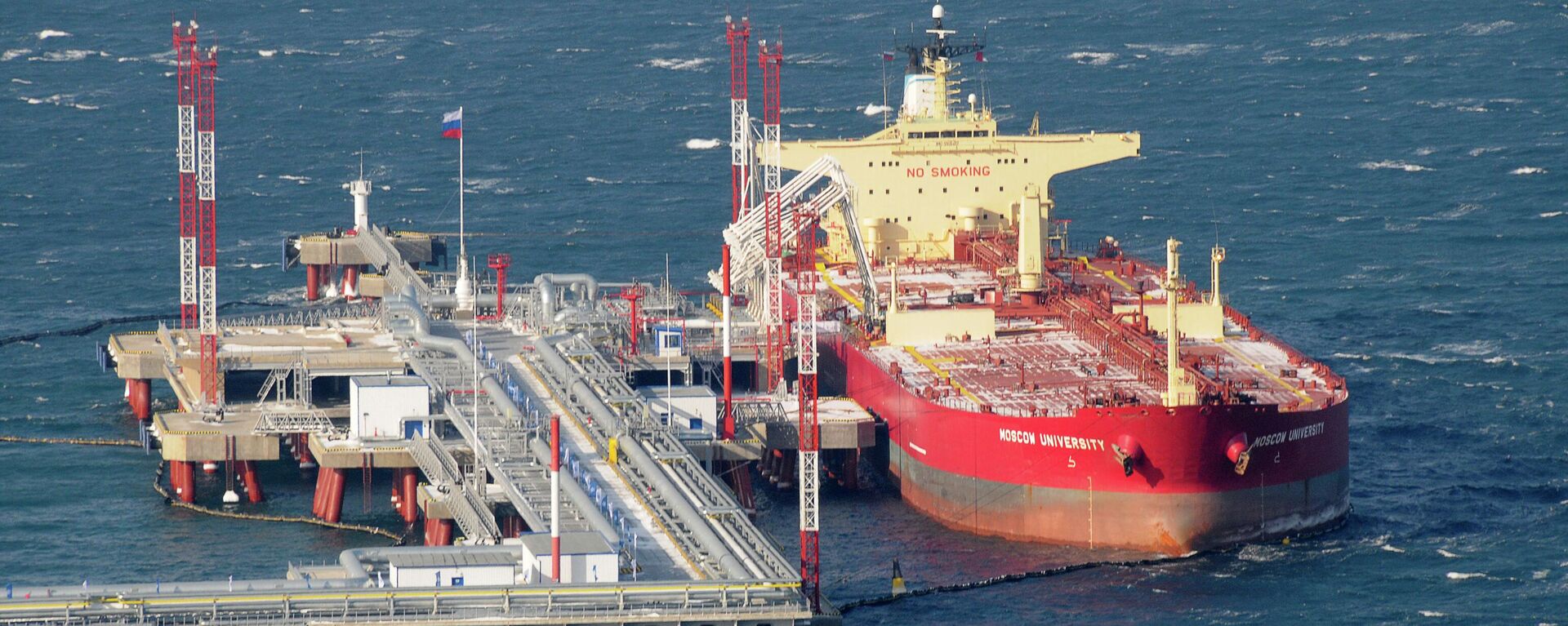
6 December 2022, 18:14 GMT
The designer of the price-capping plan believed that Russia would be unable to quickly beef up its tankers fleet and boost insurance services.
In addition, NATO member states and the military bloc partners have long been keeping an eye on major sea lanes and hydrocarbon deliveries. Due to NATO's expansion, western geopolitical players could hypothetically create troubles for Russian cargo ships heading to the East from the Baltic and the Black Seas and further, through the Suez Canal and in the South China Sea.
Previously, it was China that noticed that the traditional sea routes running from Europe and the Middle East to Asia are particularly vulnerable for potential sabotage and blockade from the collective West. Apparently, therefore, Chinese President Xi Jinping kicked off his famous Belt and Road Initiative (BRI), according to US intelligence agency Stratfor, also known as the "shadow CIA."
In 2015
Stratfor released a report alleging that Beijing's BRI was not a bunch of lucrative infrastructural projects but a well-thought-out strategy of diversifying China's transport corridors. The US analysts admitted at the time that US military strategists are watching the established sea lanes closely and are ready to take action.
"US war planners have certainly not ignored China's geographic vulnerability… In the case of a war between the United States and China, many US strategists favor imposing a distant blockade of Chinese waters," Stratfor wrote, adding inland sea routes and energy pipelines could solve Beijing's dilemma.
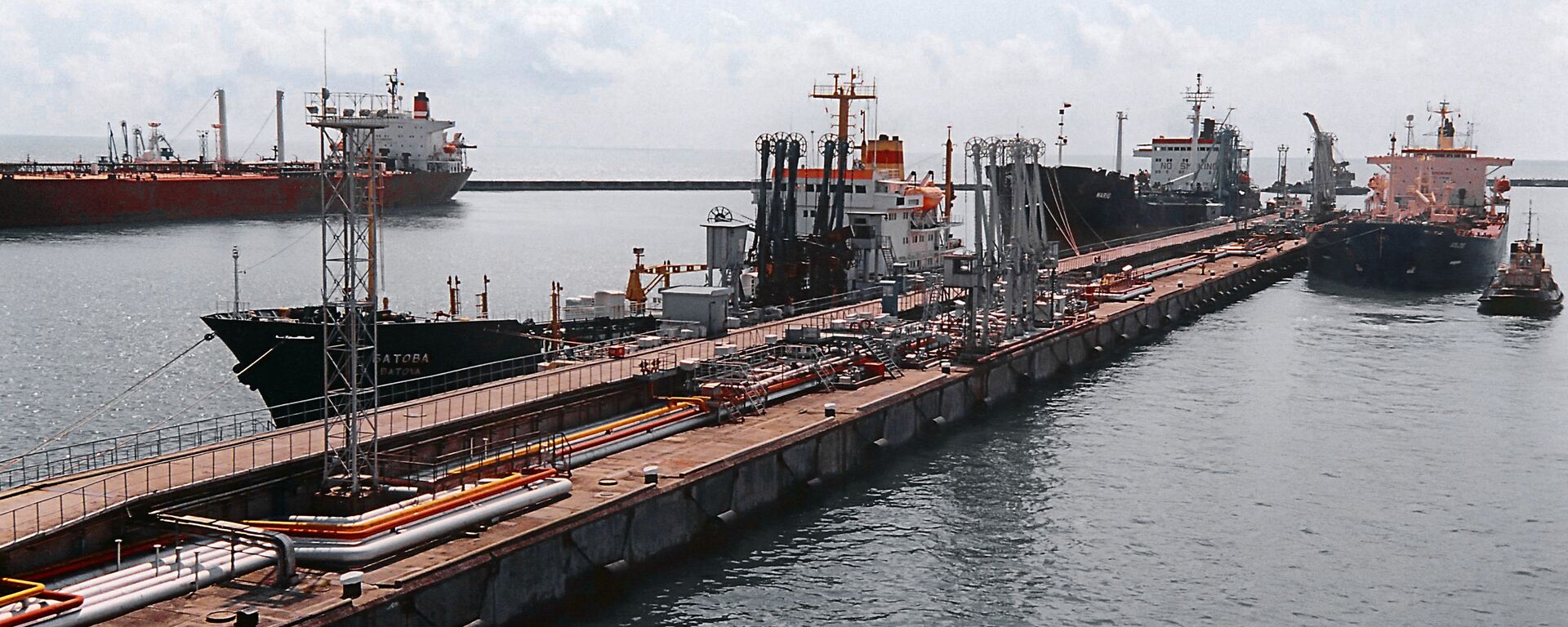
8 December 2022, 17:34 GMT
Russia Diversifying Transportation and Insurance
It appears that Moscow has assessed all the potential scenarios after the West stepped up its bellicose rhetoric, deliveries of arms and sanctions policy in the beginning of the year.
Russia is reported to have bolstered its tanker fleet to deliver oil. In May, Russia's Rosneft PJSC and Gazprom Neft PJSC started increasing the bookings of tankers owned by Sovcomflot PJSC, Russia's largest shipping company specializing in the maritime transportation of hydrocarbons.
Western mainstream press reported in December that Moscow had acquired an additional 100 vessels, while some media suggested that Russia's oil tanker fleet already amounted to 250 ships. According to Russian energy experts, the country's vessels could carry 70-80% of its total seaborne crude cargo. The Russian media hinted that the size of the Russian tanker fleet will be further expanded.
Similarly, Russia instrumentalized its own insurance companies, including the Russian National Reinsurance Company (RNRC) and IPJSC Ingosstrakh, the country’s fourth-largest general insurer. Interestingly, Western media rushed to smear Russia's insurance firms in mid-November, apparently feeling that the latter could bite a share of the market the West has long deemed to be in its full control.
As usual, the western press manipulated terms: it called the Russian oil fleet "dark" and claimed that it is operating "outside of global regulatory frameworks." However, in reality, Russia is simply maintaining its own independent fleet outside of the EU/UK regulatory framework, which Moscow now considers unreliable and abusing of free market rules.
Russia's Eurasian Oil Pipelines
Furthermore, one should also bear in mind that the G7 measures do not affect Russia's pipeline crude. The Czech Republic, Slovakia and Hungary, who were excluded from the scheme, are receiving oil through the Druzhba pipeline.
Japan hopes that it will continue to get Russian crude via Sakhalin-2, the two 800-kilometer pipelines which bring oil and gas from the fields in the north of the Sakhalin Island.
Russia also operates the 4,857-km ESPO oil pipeline that starts from Taishet in eastern Siberia and sends oil to the Pacific Ocean terminal at Kozmino. The ESPO pipeline also has a 942-km mainland China branch which goes further into the Northeastern oil pipeline network. In 2018, China strengthened the branch by building an additional line.
Thus, according to S&P Global, in 2021, Asian refineries imported 2.4 million barrels per day (mb/d) or about 120 million metric tons per year (MMt/y) of Russian oil via the ESPO oil pipeline and waterborne routes, with over 80% of the oil delivered to mainland China. Russia's Northern Sea Route
Needless to say, Russia is capitalizing on its favorable geographical situation which allows it to deliver its hydrocarbons to Asia through safe land routes. In addition, Russia has its own prospective maritime route which further lessens its dependence on the traditional sea lanes.
On December 21, 2019, the Russian government approved the country’s development plan for its Northern Sea Route (NSR), a shipping lane located along Russia's Arctic coast within its exclusive economic zone (EEZ). The route through the Arctic offers a cheaper and faster transportation corridor between Asia and Europe, completely outside US control.
The June 2021 blockage of the Suez Canal
further underlined the importance of developing the NSR as an alternative. The West's sweeping anti-Russian sanctions and anti-free market price capping has added to the project's significance. In September 2022, the journal of the Eastern Economic Forum wrote that Moscow plans to boost its Arctic fleet by
building 153 new ships, including 12 icebreakers.
Moreover, the publication suggested that Russia aims to up transarctic transportation by creating a new class of cargo vessels for the NSR by 2035. According to the new naval doctrine, announced in August, Russia intends to use the NSR as a "safe, competitive, year-round national transport route."
Russian media reported in November 2022 that icebreaking tanker "Vasily Dinkov" had passed the NSR for the second time in the history of Russia to deliver crude oil to China. On November 18, it arrived at the Chinese port of Rizhao, leaving Murmansk on October 27. According to the media, the passage along the NSR from Murmansk to Chinese ports takes an average of 18-20 days. For comparison's sake, it takes 40-42 days to bring the same cargo through the Suez Canal.
While the designers of the oil price capping initiative apparently consider themselves the smartest in the room, their sanctions policy led to Russia strengthening its maritime capabilities and self-sustainability, at the same time prompting the development of new competitive industries and innovative projects. Is this what the G7 wanted?



